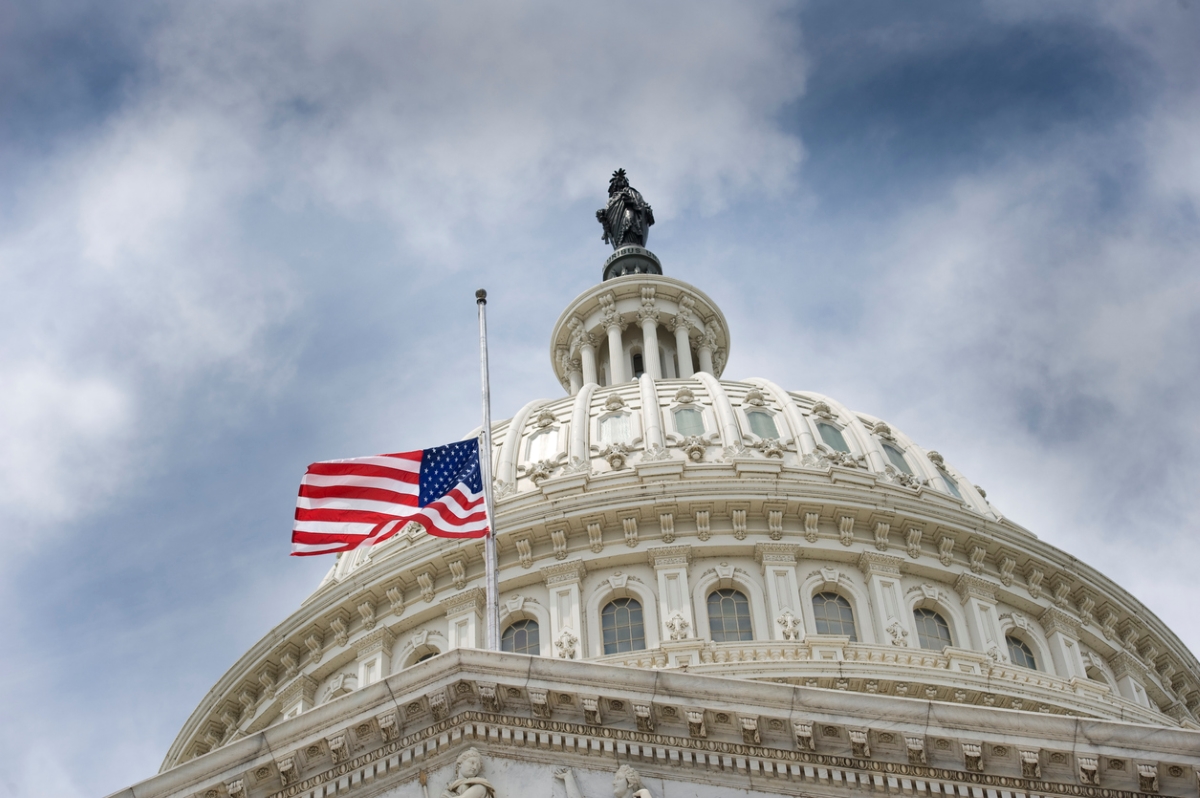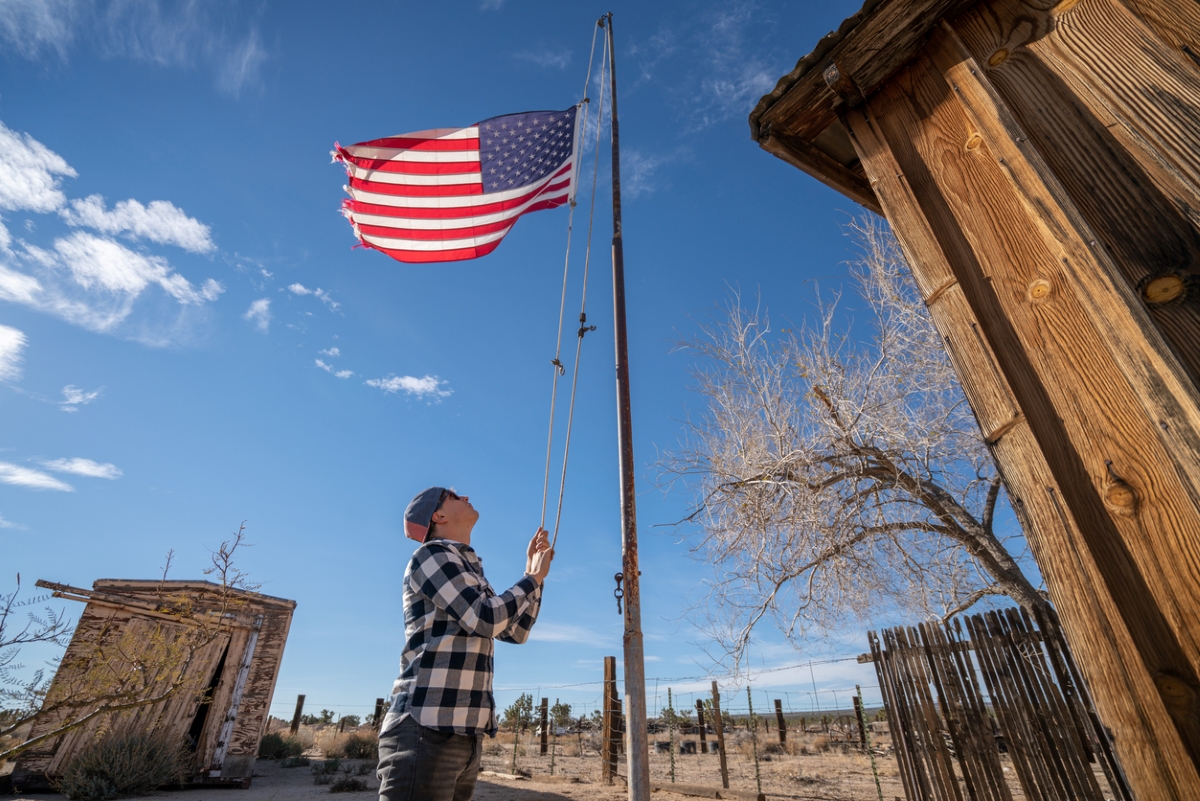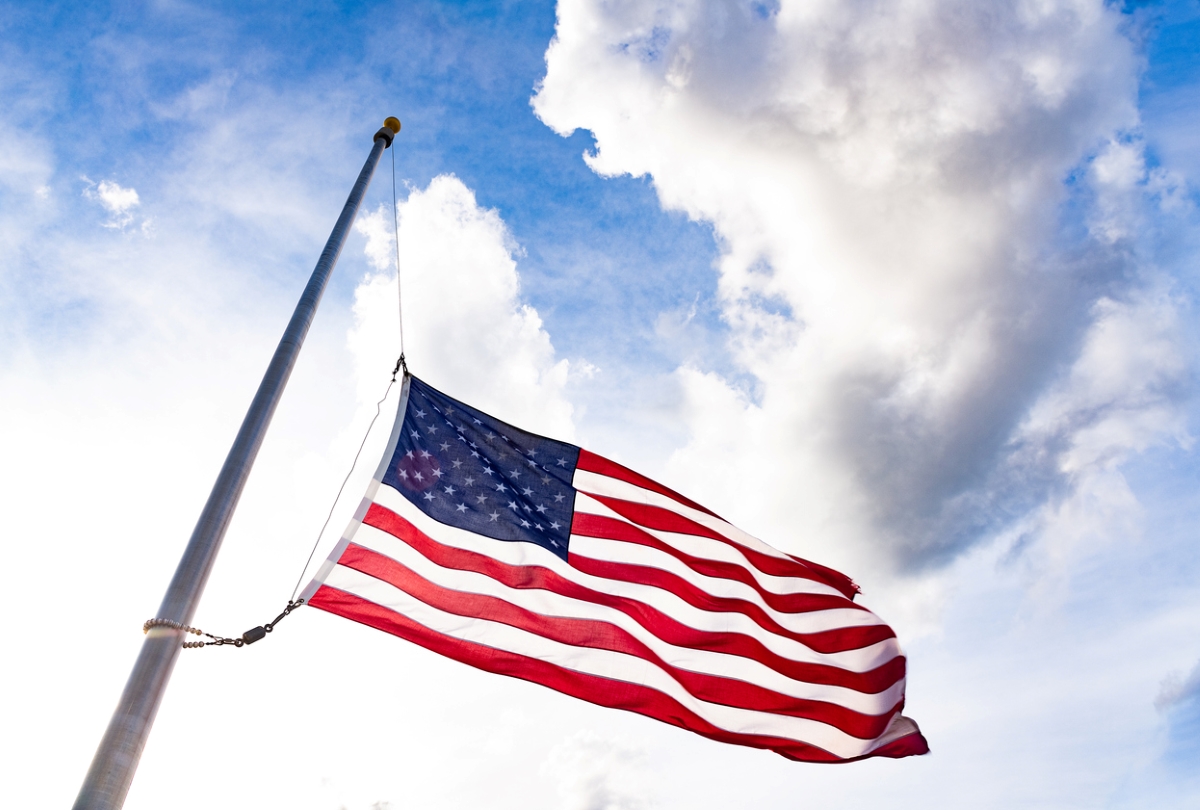We may earn revenue from the products available on this page and participate in affiliate programs. Learn More ›
Q: I’ve noticed that several of the flags on government buildings in my area are being flown about halfway up the flagpole. Why are flags at half-mast? Should I do the same at my home?
A: Flagpoles are tall, proud monuments, raising our U.S. flag as high as they can reach for all to see. For this reason, it can be strange to see a flag flying halfway up a flagpole. This act, known as flying the flag at half-mast or half-staff, is used to symbolize periods where the nation is in mourning. It can be the result of the death of a government member, an act of terrorism, or in recognition of those who have given their lives for the nation.
While proclamations for this gesture apply to government properties only, anyone who displays the flag at home can choose to follow suit. Find out more about flying flags at half-mast—and avoid any potential gaffes—in this guide.
Flying the American flag at half-staff means the nation is in mourning.
Flags may be flown at half-staff any time the nation is grieving. This can be caused by the death of a president or former president, vice president or former vice president, the chief justice or retired chief justice of the United States, a member of the Cabinet, the president pro tempore of the Senate, the majority or minority leader of the Senate, the majority or minority leader of the House of Representatives.
An American flag can also be flown at half-mast for the death of a military member or first responder. These are often local mandates issued by state officials, or suggestions by local governments.
It’s customary on some dates annually.
There are certain days of the year where it is customary to fly national flags at half-staff. These are days of remembrance that mark the anniversaries of terrorist attacks, honor fallen service members, and more.
Such days include:
- Peace Officers Memorial Day: May 15 of each year, remembering police officers who have died or been disabled in the line of duty.
- Memorial Day: The last Monday in May, remembering our nation’s battle heroes (but only for half the day—it should be raised at noon).
- Patriot’s Day: September 11 of each year, marking the anniversary of the 9/11 attacks in 2001.
- Fire Prevention Week: Typically the week in which October 9 falls, remembering the nation’s firefighters who have died or been disabled in the line of duty.
- National Pearl Harbor Remembrance Day: December 7, in memory of those who died in the surprise attacks on Pearl Harbor in 1941.
Note: Flag Day (June 14) is not a half-mast day. Flags should be flown at full height.
Flags are flown at half-mast upon the death of government officials.

Until 1954, there were no guidelines or regulations on when, for whom, and for how long the flags should be flown at half-mast. It was then that President Eisenhower put the following guidelines into effect, stating how long the flag should be flown at half-mast and for whom:
- 30 Days
- President
- Former presidents
- 10 Days
- Vice president
- Chief justice of the United States
- Retired chief justice of the United States
- Speaker of the House of Representatives
- From death to interment
- Associate justice of the United States
- A member of the Cabinet
- A former vice president
- President pro tempore of the Senate
- Majority leader of the Senate
- Minority leader of the Senate
- Majority leader of the House of Representatives
- Minority leader of the House of Representatives
- Governor
- The day of death and day after
- Senator
- Representative
- Territorial delegate
- Resident commissioner from the Commonwealth of Puerto Rico
The president and other heads of government can direct it under their jurisdiction.
There are other reasons for flags to be flown at half-mast, and this is up to the president and other heads of governments to decide. Reasons could include the death of other officials, former officials, or foreign dignitaries. They could also be flown at half-staff to mark other tragic events.
In the case of local officials determining that flags should be flown at half-mast, it only applies to buildings within their jurisdiction. So if a state governor directs that flags should be flown at half-mast in recognition of the loss of a local official, only flags within that state need to be flown at half-mast.
The U.S. Flag Code does not exclude private citizens from displaying the flag at half-staff to honor other local leaders.
While there are some conflicting opinions, the U.S. Flag Code does not exclude private citizens and businesses from flying their flags at half-mast to honor other local leaders. However, it’s important to note that while it is okay for these private citizens to fly their flags at half-mast, it is largely not believed that mayors and county executives have the right to order it. The citizen has the right to choose whether or not they fly the flag at half-mast for the death of a local official.
How to Properly Fly Flags at Half-Mast

Should citizens decide to fly flags at half-mast, there is a procedure to follow. It’s relatively simple, but honoring the nation, its flag, and the mourned should be done per the following process outlined in the U.S. Flag Code:
- Carefully attach the flag to the flagpole, preventing it from ever touching the ground.
- Briskly run the flag up the flagpole until it reaches full staff.
- Slowly lower the flag to the half-staff position and secure it.
Note: If state flags are to be flown at the half-mast position, they should fly below U.S. flags.
This symbolic gesture allows the citizens of this nation to show respect to those we’ve lost, whether from natural causes, military action, or tragedy. At sunset, if your pole is not lit, be sure to briskly raise the flag to the full-staff position before ceremoniously lowering it for the day.
For flags that aren’t on flagpoles but are attached to wall-mounted brackets, there are usually two positions: 45 degrees and 90 degrees. To fly these flags at half-staff, simply remove the flag from the 45-degree position and reinsert it into the 90-degree position.
Another option is to hang a black streamer or ribbon from the end of the flagpole. And when a flag is showing wear and tear, remember there are specific rules for disposing of flags, too.









